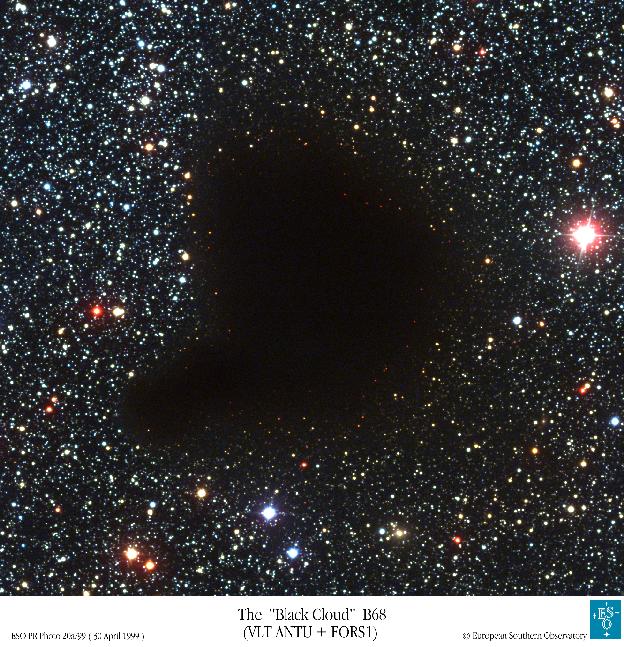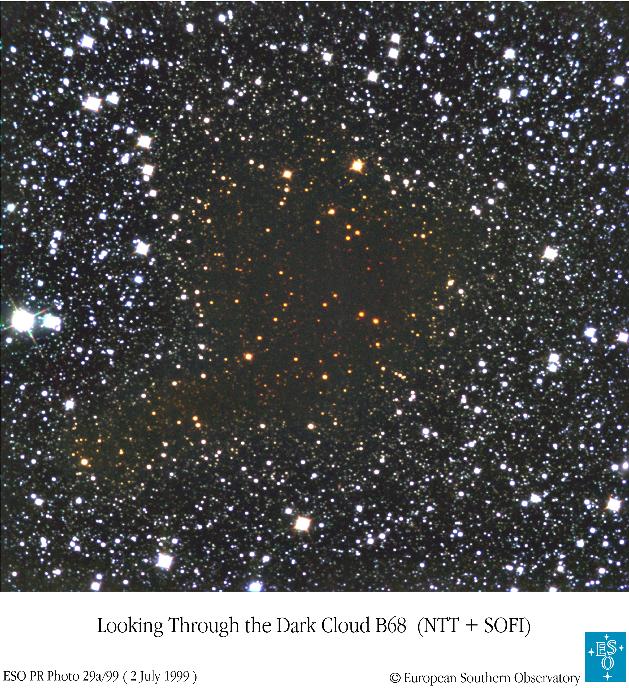
| 
| 
| 
| 
| 
| 
| 
| 
| 
| 
|

| 
| 
| 
| 
| 
| 
| 
| 
| 
| 
|

At longer wavelengths dust grains in gas clouds are not as good in blocking the light from background objects. At near-infrared wavelengths (3 to 4 times longer wavelengths than green light) the gas cloud is already nearly transparent. At mid-infrared wavelengths (more than 10 times longer wavelengths than green light) this cloud is completely transparant.

Here is a sequence of images of Barnard 68 taken at progressively longer wavelengths. In blue light (0.44 micrometer) the cloud is completely opaque. In red light (0.9 micrometer) the cloud's edges are becoming transparent. At the longest wavelength (2.16 micrometer) the cloud is nearly completely transparent.
